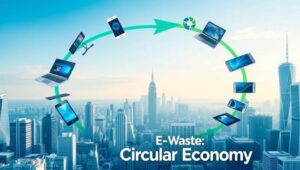May 30, 2025
Certifications for Sustainable and Ethical Gadgets (2026)
In 2026, consumers are increasingly demanding sustainable and ethical gadgets. To navigate the landscape, understanding key certifications is essential. This guide highlights the leading certifications ensuring environmental and social responsibility in the electronics industry. Key Certifications for Sustainable Gadgets EPEAT (Electronic Product Environmental Assessment Tool): Focus: Environmental performance across the product lifecycle. Criteria: Addresses criteria like materials selection, energy consumption, product longevity, and end-of-life management. Benefits: Helps identify products that reduce environmental impact. Energy Star: Focus: Energy efficiency. Criteria: Sets standards for energy consumption in various electronic devices. Benefits: Ensures products consume less energy, reducing electricity bills and carbon footprint.








